For any serious photographer who wants to create perfect lighting conditions, various light modifiers are necessary tools. There are many options available for producing light as well as modifying it to create interesting results. It is crucial to be well-informed about the characteristics of each modifier in order to make smart choices. Regardless of the light source that you regularly use in your photography (daylight, continuous or flash), light modifiers can surely help you improve your work.
The following 5 modifiers are very reliable, easy to use and they can bring dramatic results once you master the art of controlled lighting.
1. Umbrella
Umbrellas are an inexpensive and versatile light modifier that can turn a harsh flashlight into soft and indirect bounced light. They are easy even for beginners to use because they produce a rather broad type of diffused lighting.
There are a few different types of umbrellas. Silver and gold reflective umbrellas are very common and they are usually used when shooting large groups of people. The silver umbrella gives a cool light, while the gold one creates a nice warm light which can enhance your model’s skin tone. However, both silver and gold umbrellas produce harder light than the white reflective umbrella. The white one creates very soft light with less spread and less contrast, which can be useful if you’re seeking for the ethereal look in your portraits.
Shoot-through (translucent) umbrellas are a popular choice too because they diffuse and spread light evenly. The main role of a shoot-through umbrella is to increase the size of the light source and make it softer and more flattering for the subject.
Another important thing to consider when choosing the perfect umbrella is its shape. A deeper umbrella produces a tight beam of light that's very strong at the center, while a more shallow umbrella makes a dispersed beam of light that has a somewhat feathered look around the edges.
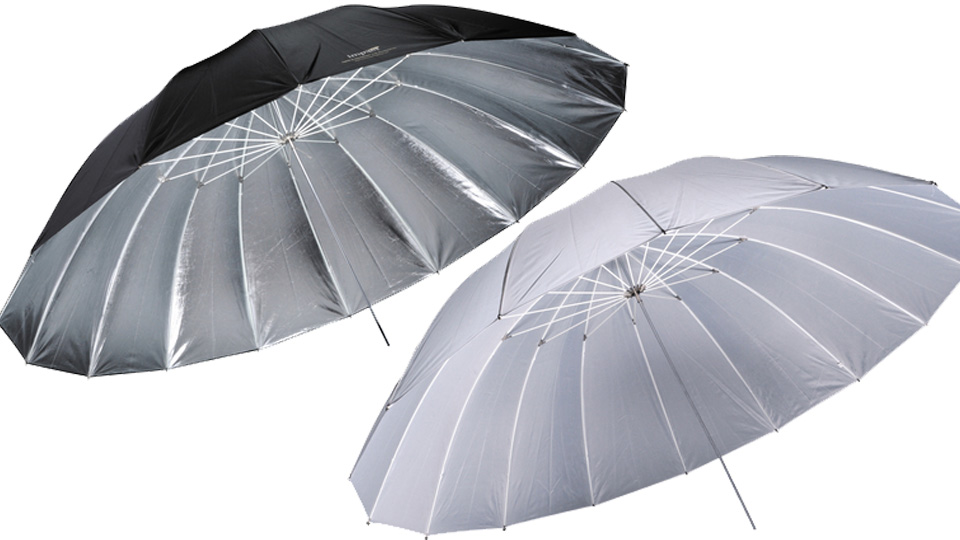
2. Soft Box
Softboxes, similar to umbrellas, serve to make light sources bigger and more diffuse. The sides and back of the softbox are covered with a bright surface (usually an aluminum foil) that acts as a reflector. There are two different ways to utilize a softbox – with flash or with continuous light sources such as fluorescent lamps, quartz halogen bulbs or tungsten bulbs. Softboxes follow the simple rule – bigger boxes throw softer light than smaller ones under the same conditions. But whether you choose a large softbox or a small portable one, the area of coverage is about the same size.
It is also important to mention that softboxes come in various shapes. In addition to the traditional rectangular shape that can be found in any studio, there is also a strip bank that provides a more vertical light source and an octabox that has an octagonal front surface. The latter one is highly valued in high-end portraiture because people photographed with an octabox have a circular sparkle in their eyes which resembles a natural sparkle from the sun.
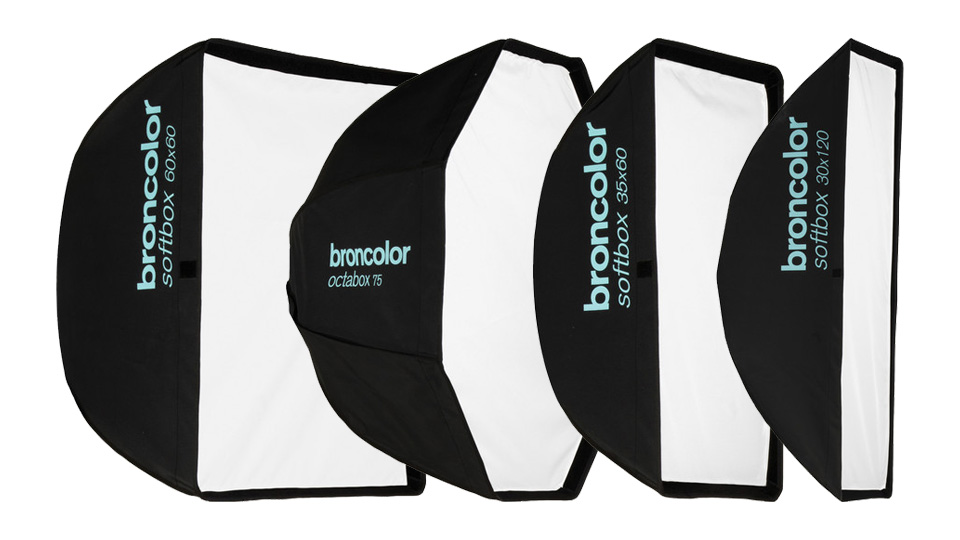
3. Beauty dish
A beauty dish is simple, shallow disk attached to a light source. It consists of a plate covering the flash head and most of its light is aimed forward at the model.
Beauty dishes are a popular light modifier usually reserved for fashion photography. They are perfect for head and shoulder portraits that highlight makeup and hair. The quality of light produced by a beauty dish is not as soft as a soft box, since their main function is not to soften but to sculpt the model’s face. Beauty dishes are also known for making beautiful catch lights in the eyes.
One thing to be careful about when using beauty dishes is the way they cast shadows; since the shadows are more pronounced, a photographer has to be aware of the angle at which the light hits the subject.
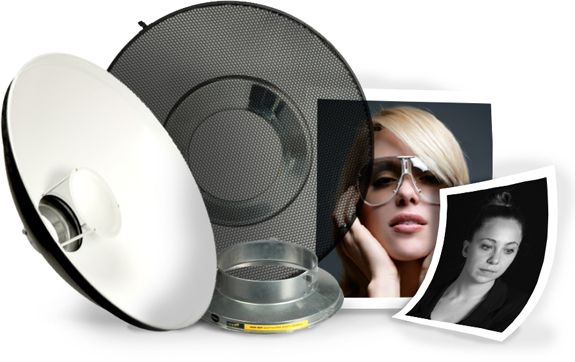
4. Grid
Grids are very common and inexpensive accessories in studio setups and they are used to keep light focused in a specific direction and to provide a dramatic, spotlight feel. Using a grid can lead to beautiful portraits because it allows a photographer to illuminate the subject with the full power of light source while keeping the background dim. Another great thing about grids is the fact that they are compatible with many other light modifiers, such as beauty dishes and soft boxes. They're also often used on backlights because they prevent the lens flare.
The most common type of grid is the honeycomb grid and it comes in various sizes. The size of the grid dictates the tightness of the beam. Since honeycomb grid light modifiers are used for very precise work, it often takes a lot of experimentation to position them properly.
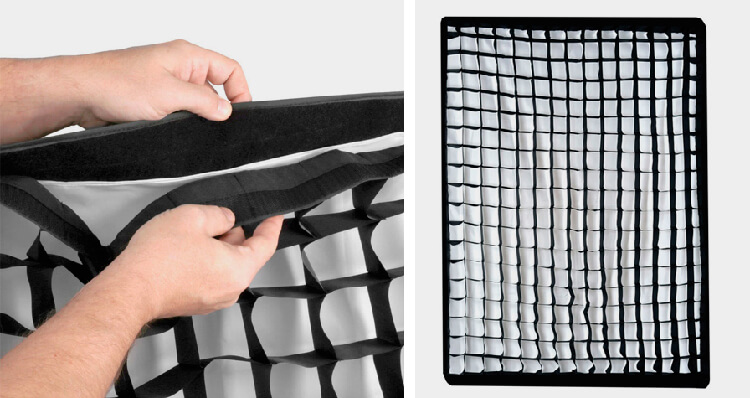
5. Gel
Gels are probably the most fun to use among various light modifiers! Adding a gel to the light source can help correct the white balance or it can go in the opposite direction and introduce a surreal splash of vibrant colors. There are hundreds of different kinds and colors when it comes to these gels.
For instance, a CTO gel is meant to balance out mixed-light scenarios. It can easily warm up a flash and make it look like the everyday light bulb. There are also more specific gels that can counteract casts from fluorescent lights as well as gels that are simply meant to add color to a scene. These gels are the most playful to work with – rather than evening out the light, they make it more dramatic.
Gels are highly compatible with other types of light modifies. For instance, using a grid in conjunction with a gel is a great idea – it makes a specific color pop in a well-defined area without throwing an uncontrolled color cast across the entire image.
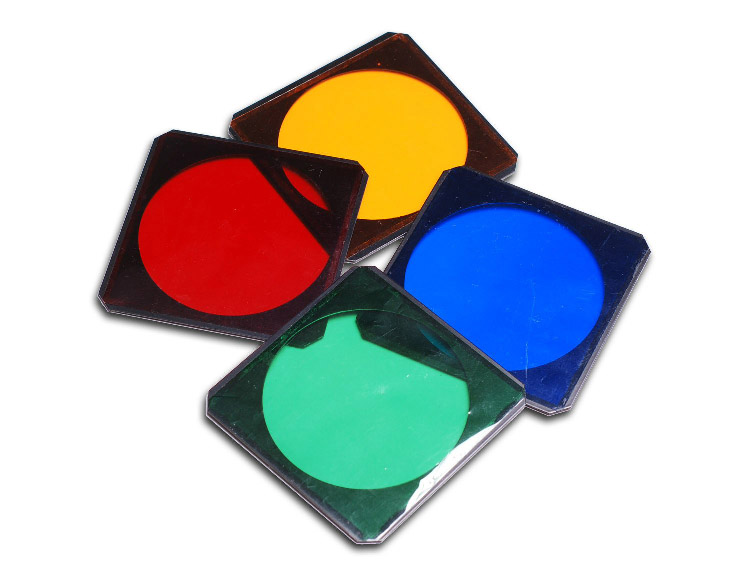
Light modifiers can certainly make images more interesting and more dramatic. While not all of them are easy to use, they are a great challenge for any photographer who wants to learn more about portraiture and have a complete control over his light sources. Light modifiers are also very versatile and can be used both in a studio or on location, which is an additional reason to consider using them.







1 Comment
Nice one Jasenka, thank’s for sharing.